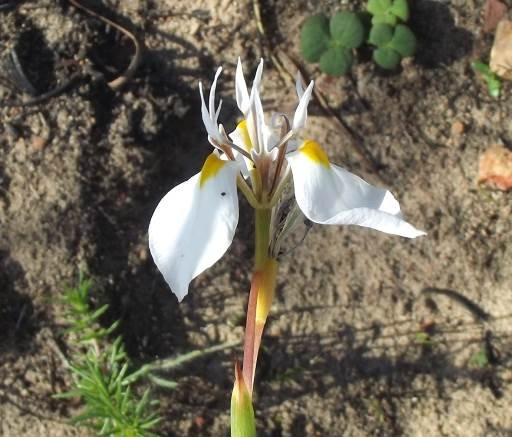Moraea lilacina

Author: Ivan Lätti
Photographer: Louis Jordaan
Moraea lilacina is a slender, cormous perennial that reaches about 30 cm in height in its deciduous, above-ground parts. The annual, single leaf is without midrib and narrow, less than 5 mm wide.
The white or pale lilac to mauve flowers have three outer tepals, the claws of which are angled up and the limbs angled down and outwards. The broad, conspicuously banner-like lobes are laterally rounded, ending in acutely pointed tips. These outer tepals dominate the floral appearance by their size and yellow nectar guides found at the lobe bases, immediately outside the abrupt bends where the tepal limbs turn down. The three stamen filaments are separate, brown in the photo, less than 1 cm long. The forked, erect style branches are white, flattened and sharply pointed. Flowering happens in spring.
The species distribution is restricted to part of the Little Karoo in the Western Cape, southeast of Calitzdorp around the Gamkaberg to the Kammanassie Mountains.
The habitat is rocky shale to sandstone renosterveld, the soil clayey to loamy. The habitat population is considered endangered early in the twenty first century, due to habitat loss in its restricted range (Vlok and Schutte-Vlok, 2015; iNaturalist; Wikipedia; www.pacificbulbsociety.org; http://redlist.sanbi.org).

